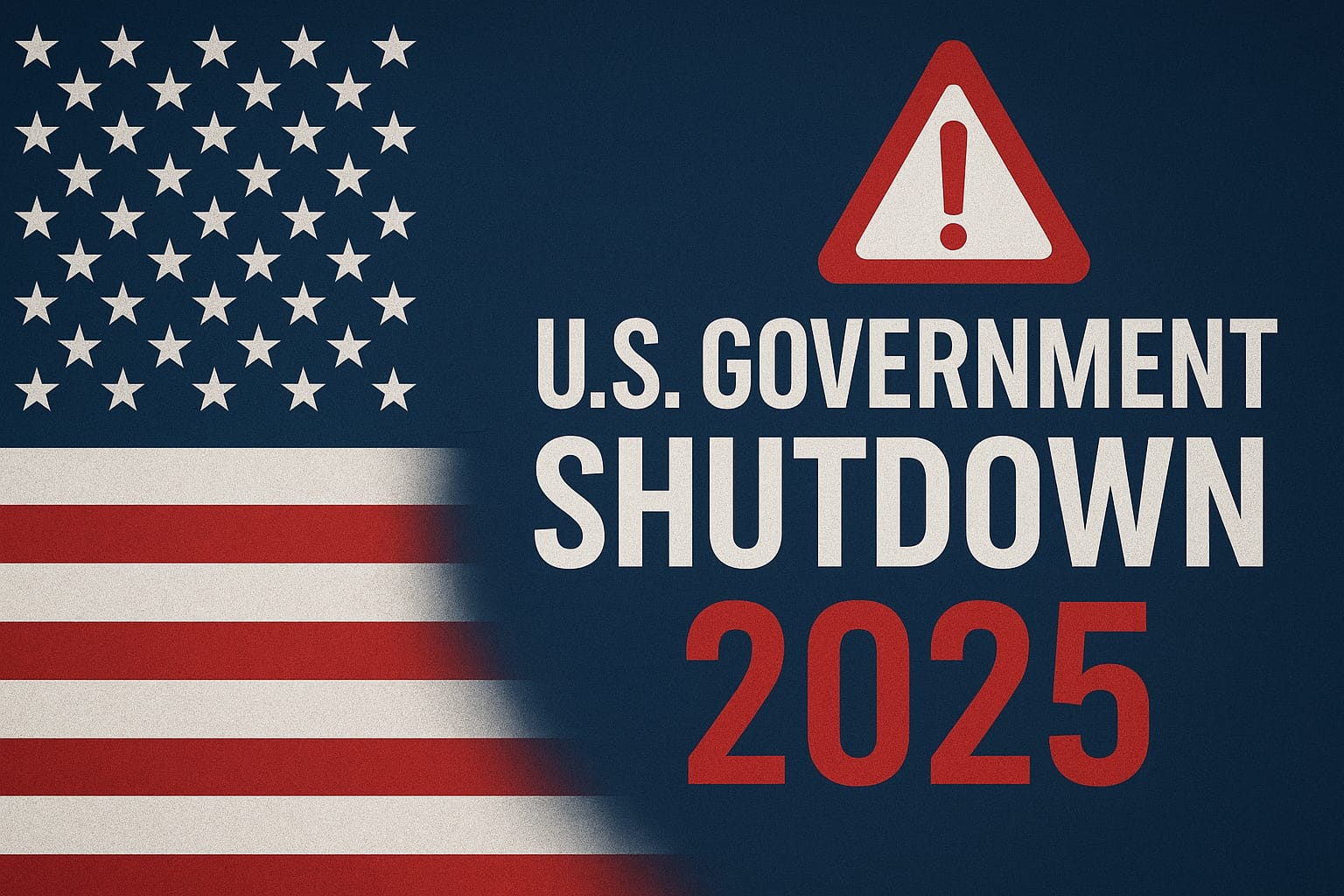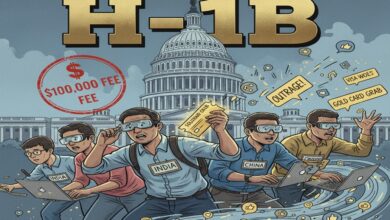The U.S. Government Shutdown 2025: Causes, Impacts, and What’s Next
Understanding the 2025 U.S. Government Shutdown: Causes, Consequences, and Global Impact

Introduction
Every few years, the United States faces an unsettling moment when parts of its federal government come to a standstill. Known as a government shutdown, this event occurs when lawmakers fail to agree on funding bills in time. In October 2025, the U.S. entered another shutdown, sending shockwaves through financial markets, disrupting services, and stirring heated debates on Capitol Hill.
This blog explores the overview of government shutdowns, reasons behind them, pros and cons, global implications, and when the shutdown might end.
What Is a U.S. Government Shutdown?
A government shutdown takes place when Congress does not pass, and the President does not sign, the funding legislation required for federal agencies to operate. Under U.S. law, government entities cannot spend money without authorization, so when the budget authority lapses, all “non-essential” operations are forced to close.
Essential services — such as defense, law enforcement, and public safety — continue to function but often with reduced staffing. Meanwhile, hundreds of thousands of federal workers are either furloughed (unpaid leave) or asked to work without pay until funding resumes.
The 2025 shutdown is partial, affecting multiple agencies, from health and housing to environmental oversight and research institutions.
Why Do Shutdowns Happen?
Government shutdowns are not financial accidents but the result of political deadlock. In 2025, disagreements over health subsidies, rescission demands, and broader spending cuts led to the funding lapse.
Here are some common causes:
-
Partisan Budget Disputes – Competing priorities on healthcare, social programs, and defense often stall negotiations.
-
Policy Riders – Lawmakers sometimes attach controversial policies to budget bills, creating friction.
-
Reliance on Temporary Funding – Instead of completing all appropriation bills, Congress frequently uses short-term resolutions, which can collapse.
-
Brinkmanship – Shutdowns are sometimes used as bargaining tools to gain leverage in negotiations.
-
Election-Year Politics – With elections looming, parties may dig in their heels to appeal to their voter base.
Pros and Cons of a Shutdown
Pros (Arguments Often Made)
-
Forces negotiation and compromise.
-
Brings attention to wasteful spending.
-
Highlights policy differences for the public.
Cons (Real-World Effects)
-
Economic Disruption: Billions lost weekly as government spending stalls.
-
Worker Hardship: Federal employees go unpaid, affecting households nationwide.
-
Service Delays: National parks, visa applications, permits, and research programs are suspended.
-
Loss of Trust: Repeated shutdowns damage U.S. credibility and public confidence.
-
Business Impact: Contractors and small businesses reliant on federal payments face delays.
While some argue that shutdowns force fiscal discipline, the economic and social costs far outweigh any perceived benefits.
Impact on U.S. Economy and Global Markets
Domestic Impact
-
GDP Growth: Each week of shutdown can shave off 0.1–0.2 percentage points from quarterly growth. A long shutdown risks recessionary pressure.
-
Stock Market: Historically, shutdowns create short-term volatility but markets tend to recover quickly once funding resumes.
-
Federal Services: Mortgage approvals, small business loans, and trade permits are delayed, disrupting households and businesses.
-
Public Programs: Agencies like the CDC and NIH are hit, slowing health research and preparedness.
Global Impact
-
Investor Confidence: Political instability in the U.S. shakes global confidence.
-
Capital Flows: Emerging markets may see currency pressure as investors flock to safer assets.
-
Trade Disruptions: Regulatory delays affect exports, contracts, and global supply chains.
-
Currency Markets: The U.S. dollar often weakens during shutdowns, creating ripple effects for international trade.
Though markets are used to short shutdowns, prolonged ones increase the risk of global instability.
When Will the Shutdown End?
Unlike a strike with a set timeline, shutdowns end only when Congress passes and the President signs a funding bill. Historically, shutdowns have lasted anywhere from a few days to over a month — the longest being 35 days in 2018–2019.
The 2025 shutdown has no fixed end date. Its resolution depends on how quickly lawmakers can compromise on contested budget issues. Political pressure from the public, media, and financial markets often accelerates a deal.
Additional Concerns
-
National Security Risks – Reduced staffing in cybersecurity and defense departments can weaken readiness.
-
Healthcare & Social Programs – While Social Security and Medicare continue, support services slow down.
-
Federal Courts – Reserve funds may allow courts to function for a while, but a long shutdown leads to case delays.
-
Government Contractors & Grants – Businesses and nonprofits depending on federal contracts face cash crunches.
-
Reputation Risk – Repeated shutdowns may push credit rating agencies to reconsider U.S. debt reliability.
Conclusion
The 2025 U.S. government shutdown underscores the fragility of political negotiations in Washington. While shutdowns are often used as leverage in budget disputes, the economic, social, and global costs are undeniable. Workers suffer, services halt, and markets face uncertainty.
Ultimately, the shutdown will end only when political leaders set aside differences and put governance above gridlock. Until then, both the U.S. and global economies must brace for ripple effects.
Sources
-
Brookings Institution
-
CBS News
-
Reuters
-
The Guardian
-
Bloomberg
-
Al Jazeera
-
ABC News
-
CoinTelegraph
-
U.S. Office of Personnel Management (OPM)
-
U.S. House & Senate Official Statements
For more content, visit ScoopyNewz or subscribe to our YouTube channel




